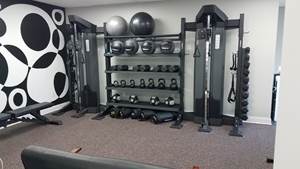US Should Consider German Apprenticeship Model
The German apprenticeship model is effective in Germany. But can it be successfully transplanted here? “The Atlantic” recently posted an article discussing the German Apprenticeship model.

Machinists are in high demand.
The need for talent is a universal concern. The German apprenticeship model is effective in Germany. But can it be successfully transplanted here? “The Atlantic” recently posted an article discussing the German Apprenticeship model.
The article gives three key differences between German and U.S. ideas of apprenticeships:
The first thing you notice about German apprenticeships is that the employer and the employee still respect practical work. German firms don’t view dual training as something for struggling students or at-risk youth. “This has nothing to do with corporate social responsibility,” an HR manager at Deutsche Bank told the group I was with, organized by an offshoot of the Goethe Institute. “I do this because I need talent.”
The second thing you notice is that both employers and employees want more from an apprenticeship than short-term training. Our group heard the same thing in plant after plant: We’re teaching more than skills. “In the future, there will be robots to turn the screws,” one educator told us. “We don’t need workers for that. What we need are people who can solve problems,” skilled, thoughtful, self-reliant employees who understand the company’s goals and methods and can improvise when things go wrong or when they see an opportunity to make something work better.
A final virtue of the German system is its surprising flexibility. Skeptical Americans worry that the European model requires tracking, and it’s true. German children choose at age 10 an academic high school, a vocational track, or something in between. But it turns out there’s a lot of opportunity for trainees to switch tracks later. They can go back to school to specialize further, earn a master craftsman’s certificate or train as a trainer in the company’s apprenticeship program—and many do.
The question that most North American businessmen have when discussing this issue is ROI, return on investment. In Germany, according to the article, the state pays the training expense for each apprentice. In the U.S., companies will have to foot the bill for almost all expenses themselves.
Trained and credentialed employees will have the freedom to leave the employer, arguably before that employer can get any return on their training investment. We think that the cost problem and the ROI problem can be solved, with work, here in North America. But the problem that we need to solve first is what The Atlantic piece calls “the biggest obstacle:”
American attitudes toward practical skills and what Germans still unabashedly call “blue-collar” work. In America… we’re suspicious of anything that smacks of training.
I know as a parent, there is a lot of social pride at having one’s children attend university. But I am starting to see that the real pride is not about the university that one’s child attends. It is rather the fact that they got a job capable of offering a return on the investment of all those college expenses.
The real pride for parents these days is being able to say their child in fact has a full-time job, is living independently and is not overburdened with debt.
In North America, the way to accomplish this is by “earn as you learn” to pursue a degree after getting a well-paying career started. Often, the employer provides tuition assistance.
Getting started in a well-paying career in advanced manufacturing can be as simple as a one semester training program at a local community college. Not years and years of loans and expenses and fees with no immediate ROI. Earn as you learn makes ROI simultaneous with your efforts, not some dreamed for, long in the distant future hoped for outcome.
What is going to be the key for adopting apprenticeships here in North America? I think it will be the realization by all affected businesses, potential employees, parents of students, educators, government officials, that there truly exists a critical need for talent.
Originally posted on PMPAspeakingofprecision.com blog.
Related Content
Applying a Healthy Approach to Employee Investment
Service Center Metals’ on-site health center offers its employees and their families free same-day health care and, in return, the employer is gaining many benefits including a healthier workforce and attracting potential employees.
Read More6 Tips for Training on a Swiss-Type Lathe
There are nuances to training a person to effectively operate a Swiss-type lathe. A shop I visited a while back offers some suggestions.
Read MoreStrengthening Manufacturing Workplaces Through Active Listening
A good strategy to weather the storms of manufacturing market upheavals and unpredictable factors is to commit to continuous, active employee listening.
Read MoreManufacturing Skills Training: Virginia Martinez and Laiken Carrillo
Roles of Women in Manufacturing Series: A precision machining career starts with skills. Virginia and Laiken share their journey and how they help prepare the next generation.
Read MoreRead Next
A Tooling Workshop Worth a Visit
Marubeni Citizen-Cincom’s tooling and accessory workshop offers a chance to learn more about ancillary devices that can boost machining efficiency and capability.
Read More5 Aspects of PMTS I Appreciate
The three-day edition of the 2025 Precision Machining Technology Show kicks off at the start of April. I’ll be there, and here are some reasons why.
Read MoreDo You Have Single Points of Failure?
Plans need to be in place before a catastrophic event occurs.
Read More












.jpg;maxWidth=300;quality=90)









